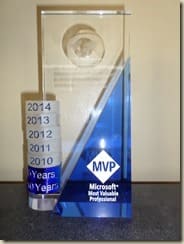 I’m excited to be presenting a free session that’s focused on how IT pros can use Windows Server 2012 R2 to improve their datacenter operations.
I’m excited to be presenting a free session that’s focused on how IT pros can use Windows Server 2012 R2 to improve their datacenter operations.
The event will take place on the morning of Friday, September 26th, 2014. The scheduled presentation will start at 9:00am and conclude at 1:00pm, including breaks and meals. For more details, and to register, please visit the Transform the Datacenter MVP Roadshow page for this event. Registration is free, and breakfast and lunch will be provided.
Here’s an overview of the topics I’ll be covering:
|
Session I: Transforming Your Datacenter: Why and How a. Common barriers to replacing current OS, applications, network, storage, and related infrastructure b. Addressing datacenter management challenges c. Understanding the role and benefits of public/private/hybrid cloud approaches d. Planning for and Migrating from Windows Server 2003 |
|
Session II: New Features in Windows Server 2012 R2 a. Microsoft server and cloud platform overview b. Windows Server 2012 R2 Storage and Networking Improvements c. Virtualization with Hyper-V 4.0 d. Additional features and tools / Q & A |
|
Session III: Transforming Your Datacenter: Infrastructure and Cloud Benefits of Windows Server 2012 R2 a. Comparing Public, Private, and Hybrid Cloud approaches b. Understanding Microsoft Azure service offerings c. Integrating cloud and local data-center infrastructure d. Getting start with moving data, applications, and services to the cloud |
One of the many benefits of being a Microsoft MVP is the opportunity to connect with IT professionals that are located in my area (Central Texas). While there’s no shortage of online resources for technical content on this topic, sometimes an in-person, on-site session can help provide the much-needed opportunity to interact with peers outside your organization. If you’re in the Houston or Central Texas area, please do try to attend!





 Many of the technical aspects of cloud-based solutions are a natural progression for those environments that want to expand upon their virtualization deployments. This webinar will provide technical details and best practices for deploying new features in the Windows Server 2012 and Hyper-V 3.0 platforms. Topics will include reducing storage costs, implementing high-availability and disaster recovery, and improving automation to reduce data center costs and increase efficiency.
Many of the technical aspects of cloud-based solutions are a natural progression for those environments that want to expand upon their virtualization deployments. This webinar will provide technical details and best practices for deploying new features in the Windows Server 2012 and Hyper-V 3.0 platforms. Topics will include reducing storage costs, implementing high-availability and disaster recovery, and improving automation to reduce data center costs and increase efficiency.








